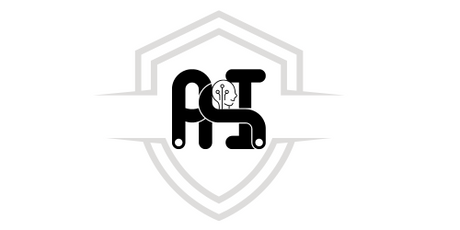Introduction
The employment landscape is constantly evolving, and the addition of the new generation of talent to the market has brought with it a wave of changes. For companies, it is crucial to understand the characteristics, motivations and expectations of these young professionals if they want to remain competitive. In this article, we will present the keys to deciphering the talent of the new generation and thus attract and retain the best.
Who are the young talents?
The new generation of talent, also known as Generation Z, is made up of those individuals born between the mid-1990s and early 2010s. This generation is digitally native, highly connected and has a great capacity for learning. In addition, they are characterized by being independent, entrepreneurial and with a strong sense of social responsibility.
Characteristics of the new generation talent:
- Digital natives: They have grown up surrounded by technology and use it naturally to communicate, learn and work.
- Highly connected: They are constantly connected to the Internet and social networks, which allows them to stay informed and in contact with people from all over the world.
- Great learning capacity: They are self-taught and willing to constantly learn new things.
- Independent: They are autonomous and make their own decisions.
- Entrepreneurs: They have initiative and seek to create their own businesses.
- Social responsibility: They care about the environment and social causes.
What is the talent of the new generation looking for?
Unlike previous generations, young talent is not only looking for a good salary and job stability. For them, there are other factors that are equally important, such as:
- Purpose and meaning: Young people want to work in companies that have a positive impact on the world and that are aligned with their personal values.
- Work-life balance: They seek flexible hours and the possibility of working remotely to be able to balance their professional and personal lives.
- Growth opportunities: They want to be constantly learning and developing professionally, so they value companies that offer training and development opportunities.
- Positive work environment: They seek a collaborative, inclusive work environment where diversity is valued.
- Recognition and reward: They appreciate recognition for their work and the possibility of receiving non-monetary rewards, such as free time or experiences.

Motivations of the new generation of talent:
- Search for meaning: They want to feel that their work has a positive impact on the world.
- Professional development: They want to continue learning and growing professionally.
- Autonomy: They seek to be independent and make their own decisions.
- Flexibility: They value flexible hours and the possibility of working remotely.
- Recognition: They appreciate recognition for their work and the possibility of receiving rewards.
How to attract and retain young talent?
To attract and retain the talent of the new generation, companies must adapt to their needs and expectations. Some strategies that can be implemented are:
- Define a clear purpose: Clearly communicate the company’s mission, vision and values and how each individual’s work contributes to a positive impact.
- Promote work-life balance: Implement flexible working hours, remote work and digital disconnection policies.
- Create a professional development program: Provide training and development opportunities so that employees can develop their skills and knowledge.
- Generate an inclusive work environment: Foster a culture of collaboration, respect and inclusion where everyone feels valued.
- Implement a recognition and reward system: Recognize employee achievements and offer attractive rewards, both monetary and non-monetary.
- Promote wellness: Offer benefits that promote the physical and mental well-being of employees, such as health plans, gym, daycare, etc.
- Provide opportunities for innovation: Encourage creativity and innovation among employees by giving them the opportunity to propose new ideas and participate in innovative projects.
- Using technology to improve the employee experience: Implement technological tools that make work easier

Strategies to attract and retain young talent:
- Using social media for recruiting: Social media is a great tool for finding and connecting with young talent . Companies can create profiles on popular platforms like LinkedIn, Facebook, and Instagram and use them to post job openings, share information about company culture, and connect with potential candidates.
- Offer an attractive recruitment process: The recruitment process must be efficient, transparent and attractive for candidates. Companies should avoid long and complicated processes and use technological tools to streamline the process.
- Provide a good onboarding experience: The onboarding experience is the first contact a new employee has with the company. It is important that it is a positive experience that helps the employee quickly integrate into the company culture and feel valued.
- Invest in employee training: Training is key to employee professional development and to making them feel engaged with the company. Companies should offer training opportunities in different areas, such as technical skills, soft skills and industry knowledge.
- Promote internal communication: It is important that there is good communication between the company and its employees. Companies must create effective communication channels so that employees can express their ideas, suggestions and concerns.
- Encourage feedback: Feedback is a valuable tool to help employees improve their performance. Companies should create a culture where feedback is given regularly and constructively.
- Offer growth opportunities: Young employees are looking for opportunities to grow professionally. Companies should offer opportunities for promotion, job rotation, and participation in challenging projects.
- Recognize and reward achievement: It is important to recognize and reward employee achievements. Companies can implement a formal or informal recognition system, and offer both monetary and non-monetary rewards.
- Create a positive work environment: A positive work environment is key to attracting and retaining talent . Companies should create an environment where employees feel valued, respected, and part of a team.
Examples of companies that are implementing successful strategies to attract and retain the next generation of talent:
- Google: Google is known for its innovative and flexible work culture. The company offers its employees a host of benefits, including a gym, childcare, and free food. Additionally, Google invests heavily in the training and development of its employees.
- Salesforce: Salesforce is another company that stands out for its positive work culture. The company offers its employees flexible hours, remote work, and plenty of opportunities for professional development. Additionally, Salesforce is committed to diversity and inclusion, and has created a work environment where everyone feels welcome.
- Netflix: Netflix is a company that has been able to adapt to new trends in the labor market. The company offers its employees a great deal of flexibility, both in terms of their work schedule and their workplace. In addition, Netflix is committed to transparency, and shares information about its financial performance with all of its employees.

Conclusion of deciphering new talent
The talent of the new generation represents a great opportunity for companies that are willing to adapt to their needs and expectations. By understanding their characteristics and motivations, companies can create an attractive and competitive work environment that allows them to attract and retain the best. Investing in young talent is investing in the future of the company.














